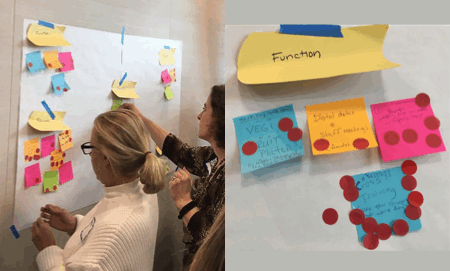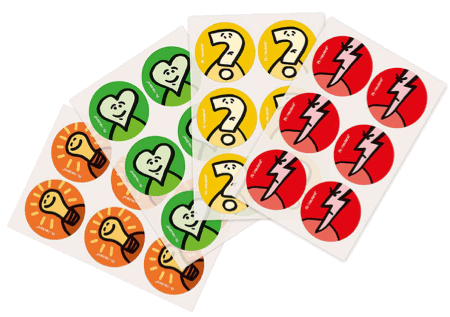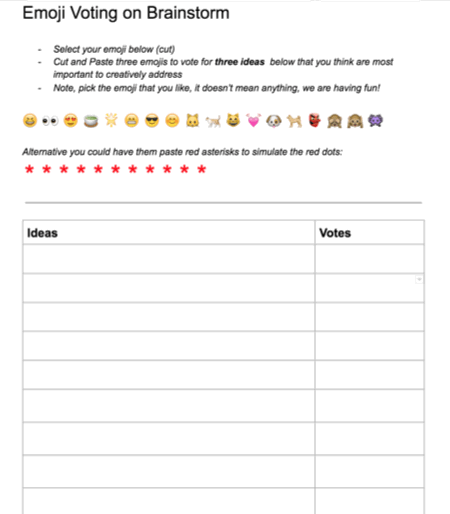
When I facilitate meetings or workshops for nonprofits, not matter the topic, I incorporate many participatory approaches and design thinking methods.
One technique that I often employ is called “Dot Voting” or “Visual the Vote.” This is a simple process for getting participants to prioritize ideas or decisions. You use this to follow a brainstorming activity which may yield an abundance of new ideas. The technique helps you need to evaluate the ideas. Dot voting is a visual way to see where the interest is and generate a robust discussion about the options.
There are different ways to approach dot voting or idea rating, but when I’m doing a workshop face-to-face, typically participants work in small groups to generate ideas and write them on sticky notes All the sticky notes go on the wall so everyone gets to see them. As a group we spend time clustering similar ideas before reviewing them.

It is at this point, each person gets to vote for the ideas that they feel are the strongest. Sometimes I give participants red dots to use for voting, other times I might use fun stickers like those above.
This process isn’t a popularity contest or a way to force a decision. The beauty in this method is the ability to unlock a discussion that can uncover hidden issues and divided opinion when you still have time to do something about it.
In summary, the purpose of the dot voting is to:
- Identify the strongest ideas and patterns of interest
- Build consensus
- Listen to all participant perspectives
- Diminish pet projects
Here is a step-by-step for the process, whether or not you do it face-to-face or online.
Clearly describe what their vote means. Are they allowed to vote for more than one thing? Can they vote on their own items? You decide. Determine how many dots or votes to give each participant.
Step 2: Start the process
Give everyone a few minutes of quiet time to consider how they will vote first to avoid any bias or group think. Then ask everyone to cast their vote at the same time.
Step 3: Discuss the results
Review the the results. Examine the outliers, both with the most or least number of votes. Have people share why they chose or rejected certain items.
How do you bring this process online? There are platforms that are designed to support design thinking methods such as Mural.Co. It does require a learning curve to master in addition to the technique.

A simple way to take dot voting on online would be to use a combination of Zoom and Google documents. Zoom would be used to conduct your online meeting. For the voting part, you would use a google document. You would need to create a table with two columns, one for the ideas and column for people to place their virtual dots or votes. To make fun, you can use emojis.
What participatory techniques have you translated from in-person meetings to online meetings successfully?

Leave a Reply